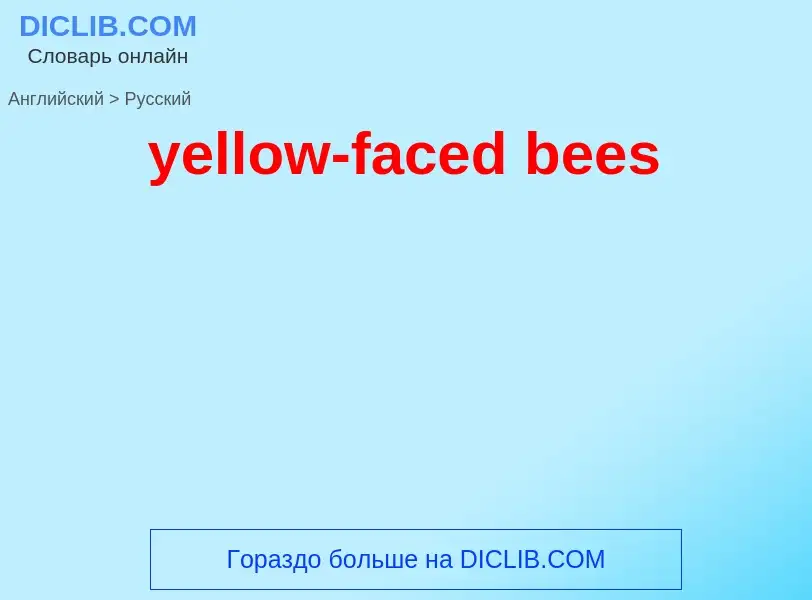Translation and analysis of words by artificial intelligence
On this page you can get a detailed analysis of a word or phrase, produced by the best artificial intelligence technology to date:
- how the word is used
- frequency of use
- it is used more often in oral or written speech
- word translation options
- usage examples (several phrases with translation)
- etymology
yellow-faced bees - translation to russian
общая лексика
желтобрюхий амазон (Amazona xanthops)
Смотрите также
Wikipedia

The Colletidae are a family of bees, and are often referred to collectively as plasterer bees or polyester bees, due to the method of smoothing the walls of their nest cells with secretions applied with their mouthparts; these secretions dry into a cellophane-like lining. The five subfamilies, 54 genera, and over 2000 species are all (with the known exception of but one species, Amphylaeus morosus) evidently solitary, though many nest in aggregations. Two of the subfamilies, Euryglossinae and Hylaeinae, lack the external pollen-carrying apparatus (the scopa) that otherwise characterizes most bees, and instead carry the pollen in their crops. These groups, and most genera in this family, have liquid or semiliquid pollen masses on which the larvae develop.
They can be found all over the world, but the most species live in South America and Australia. Over 50% of all bee species living in Australia belong to this family. Only the genera Colletes and Hylaeus can be found in Europe, while in North America, in addition to these two, the genera Caupolicana, Eulonchopria, and Ptiloglossa are found.
Australian genera include Euhesma, a large genus, members of which has been split off into other genera such as Euryglossa and Callohesma.
Traditionally, this family is believed to be likely the most "primitive" among extant bees, based primarily on the similarities of their mouthparts (the unique possession among bees of a bilobed glossa) to those of Crabronidae (the putative ancestors of bees), but recent molecular studies have disproved this hypothesis, placing the Melittidae (sensu lato) as the basal group of bees.


.jpg?width=200)




 nest.jpg?width=200)
